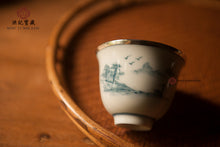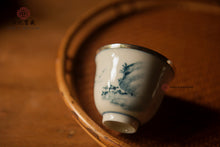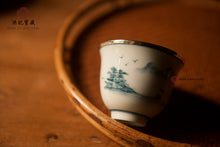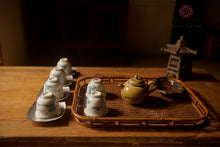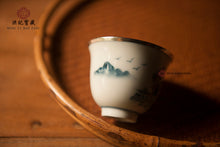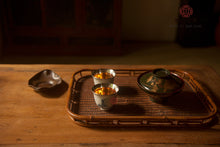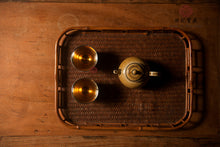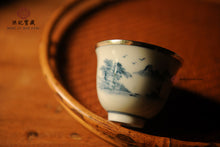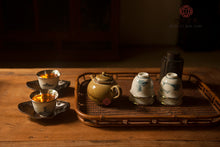
Porcelain is widely used in traditional tea utensils, with many techniques and flower styles. Through the expression of various glaze colors and hand-painted textures, it is fired in a high-temperature kiln at 1300 degrees. This kind of craftsmanship with rich historical and cultural heritage has been passed down to this day.
Silver, a precious metal material, has played a unique role in tableware, wine sets, tea sets, etc. since ancient times. Its material is beautiful but not dazzling, luxurious and elegant, and more importantly, it can keep fresh, kill viruses, and sterilize. As a tea utensil, it can bring out the fragrance of tea and awaken the charm that tea should have. It is indeed a rare and precious item among tea utensils.
And the intersection of the two is even more beautiful. The hand-painting on the surface of the porcelain or the changeable glaze color make this porcelain-clad silver cup have a more refined display. Let the beauty leap above the silverware. Holding the teacup in your hand, you can not only appreciate the beauty of the cup noodles, but also feel the fusion of silverware and water.
Porcelain-coated silver is made by refining the porcelain embryo through engraving, glazing, silver inlay, kiln firing and colored glaze. It is the combination of silver and porcelain in an artistic way. It has formed a porcelain silver work with a 999 sterling silver inner pot and a porcelain outer wall. In addition to inheriting the original efficacy of the silver water cup, it can also more effectively relieve the hot hands caused by the rapid heat conduction of silver, which is relatively monotonous with the outer wall of the sterling silver cup. Make tea more practical and more appreciative. The spirit of Chinese craftsmen is interpreted in a cup.
This 9999 sterling silver-covered porcelain landscape blue and white porcelain teacup is made of 9999 fine silver, with a volume of 55ml, a width of 6.5cm and a height of 5cm. It is very comfortable to hold with one hand, and it is very suitable for serving as a cup for the owner or drinking tea at home, or as a gift for friends.
The two materials, porcelain and silver, have their own development dimensions in history and culture, and have never intersected. From a practical point of view, only after the porcelain was damaged, two "cherishing things" crafts were derived - kintsu and curium porcelain, and eventually developed into a traditional aesthetic craft. If you also like this porcelain silver cup, you can buy it on the website of Tongxinshe Tea House, www.txs-tea.com You can go to the website to buy it directly!









